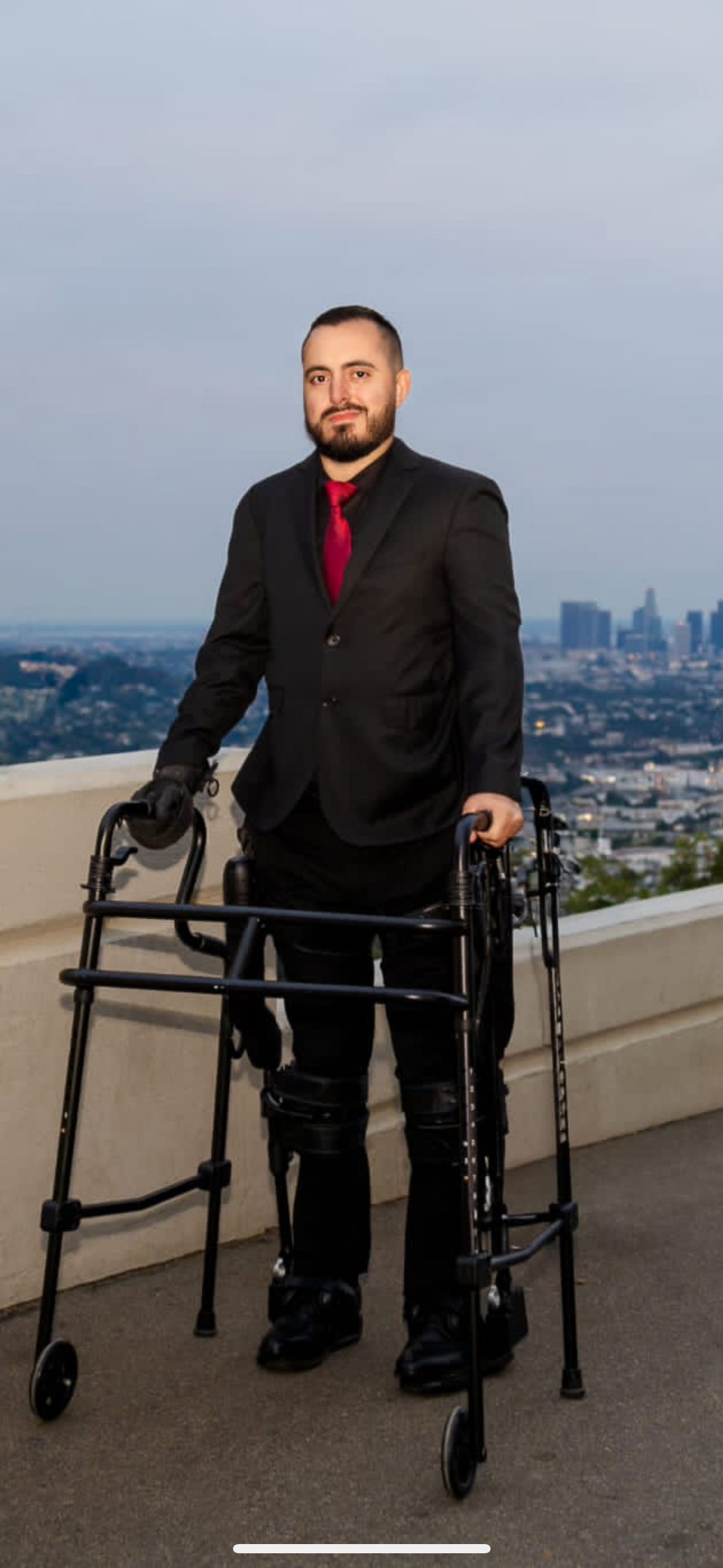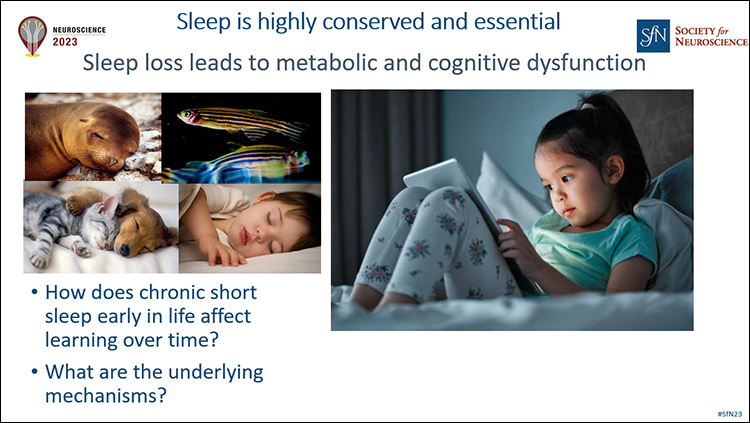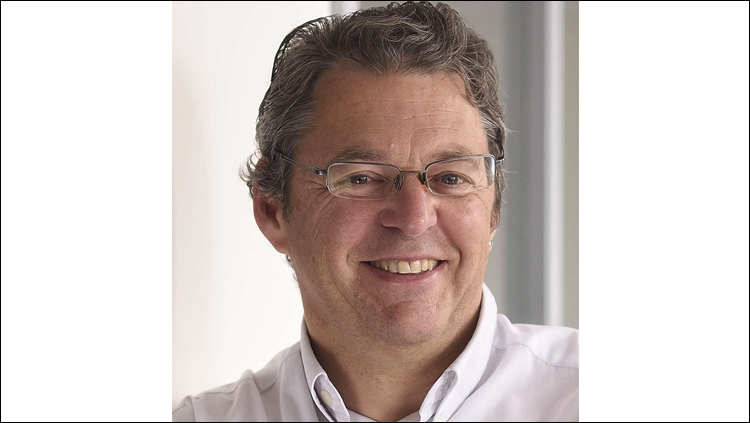Future of Neuroscience: Ignacio Montoya
“Future of Neuroscience” is a series of interviews with rising members of the field. A forward-looking complement to SfN’s “History of Neuroscience” autobiographies of distinguished researchers, interviewees reflect on their emerging careers and share thoughts on where they believe neuroscience is headed.

Ignacio Montoya
Originally from Cuba, Ignacio Montoya's dream of becoming a U.S. Air Force fighter pilot was abruptly altered by a motorcycle accident in 2012, resulting in complete paralysis from the chest down. Ignacio transitioned into the world of research, first as a research subject and later as an apprentice scientist.
During his master's in biomedical innovation and development at Georgia Institute of Technology, Ignacio pioneered groundbreaking physical training protocols utilizing biomedical robotics. He later earned a second master’s in kinesiology at California State University, Los Angeles, where he explored the functional reorganization of neural networks post-severe spinal cord injury through non-invasive spinal neuromodulation and activity-based training with a focus on the integration of sensorimotor autonomic systems involved in sexual behaviors.
Ignacio has been recognized by the Georgia House of Representatives for his efforts in advancing clinical outcomes for paralyzed patients, and he was awarded SfN’s Trainee Professional Development Award (TPDA) in 2023. He will pursue his PhD through the Georgia Institute of Technology and Emory University’s joint program in biomedical engineering, where he will continue his work to enhance clinical outcomes for paralyzed patients.
Neuroscience Quarterly (NQ): Why did you choose to pursue a career in neuroscience?
Ignacio Montoya (IM): My journey into neuroscience was unexpected. Initially, I aspired to become a fighter pilot and was on the verge of beginning that career after completing four years of military officer training and being selected as one of five airmen in my unit for undergraduate pilot training. But fate had other plans. Three weeks before beginning my pilot training as a newly commissioned second lieutenant, a motorcycle accident completely altered my life, leaving me with severe injuries including a complete spinal cord injury (SCI), a complete right brachial plexus injury, and a traumatic brain injury that left me in a coma for three months.
Because I had a complete SCI, I did not qualify for crucial therapies that could address my injuries and the secondary medical complications that arose from my immobility. Even in research, most studies I found were and still are aimed towards incomplete, acute SCI.
In hospitals across the country, I encountered this pervasive sense of hopelessness regarding the possibility of recovery, but I approached the situation the way my military training had prepared me. I embarked on a journey of self-discovery, self-experimentation, and exploratory research, driven by unwavering love, faith, and perseverance. I flipped the script and used my undergraduate business degree to open doors. I got involved with an outpatient paralysis recovery center to learn of what therapy options even existed, attended various annual research symposia throughout the country, and eventually pursued further education, obtaining master's degrees in biomedical innovation and development, as well as kinesiology. I am currently pursuing a PhD in bio medical engineering. Ultimately, my decision to pursue neuroscience came from a burning desire to transform tragedy into triumph and to inspire hope in the face of adversity through my lived experience.
NQ: How were you able to stay motivated in the face of such adversity?
IM: When I was four years old, my loving, beautiful mother died from a leukemia that came out of nowhere. She was 33 years old in Cuba, and within nine months of being diagnosed, she passed away. We won a visa lottery so that she could pursue medical treatments for her leukemia in the U.S., but unfortunately, it was too late.
I came to a new country, had to learn a new language, and leave all my family behind. When times got hard, my dad would say, “You have an opportunity that millions of people would envy. Do well in school, and here you can achieve whatever you dream.” On top of everything that I grew up facing, the physical, the psychological, and the mental preparation of becoming a second lieutenant fighter pilot prepared me to fight.
When I had the spinal cord injury, it was like the war that I'd been preparing for all my life came to me.
The doctor gave me a 1% chance of ever walking again. That's all I needed. I had a 1% chance of leaving Cuba; we were part of the 1% that won the visa lottery. I was part of the 1% that got selected for a fighter pilot slot in the Air Force. When the doctor gave me a 1% chance, I thought, “Okay, I’m used to that.”
When I had the spinal cord injury, it was like the war that I'd been preparing for all my life came to me.
NQ: Is there a particular moment in your career so far that motivates and inspires you to continue with this research?
Collaborating with Monica Perez on transcutaneous spinal electrical stimulation as a research participant was an early motivator, and it led me to Reggie Edgerton’s lab where I have participated in non-invasive spinal stimulation combined with activity-based training since December 2019. The results have been transformative, impacting numerous physiological systems, reversing many secondary medical complications, and significantly improving my overall health. So far, I have taken over 400,000 steps in an exoskeleton while receiving transcutaneous electrical stimulation in my lumbosacral spine. I have been able to decrease the robot assistance provided by the device over time.
The journey also introduced me to my wife, Hilda, who became a research assistant and a physical therapy assistant trained on exoskeletons just so she could be the person that helps me walk. She walks behind me every time I take a step in an exoskeleton. So those 400,000 steps have also been taken by her. Her dedication and support have been invaluable, and together we continue to explore novel approaches to improve my health and help redefine functional recovery after chronic paralysis.
NQ: Where do you see your career going and what are your goals?
During my PhD in biomedical engineering, I will utilize neurotechnology, robotics, and non-invasive electrical neuromodulation to enhance functional recovery for paralysis patients dealing with chronic brachial plexus injuries and spinal cord injuries. I envision a future where a brain computer interface restores control of my paralyzed right arm via a myoelectric robotic orthosis, and a self-balancing exoskeleton enables me to walk, jog, dance, climb stairs, and even explore space. I want to show the world that even a paralyzed individual can achieve functional independence in zero gravity.
I wish to dedicate my life to proving that overcoming paralysis is not only possible but can be a reality for many.
Focus on what’s most important to you, your core values — they should serve as your guiding light through uncertain times.
NQ: What advice do you have for those facing a life that no longer aligns with what they had planned?
IM: My advice centers around embracing the concept of neuroplasticity, where the brain forms new connections and adapts to change. Just as our central nervous system evolves, we must cultivate resilience and flexibility in our mindsets and behaviors. Start by acknowledging the reality of the situation without dwelling on the past. Focus on what’s most important to you, your core values — they should serve as your guiding light through uncertain times. Harness this new-found adaptability to explore alternative paths and solutions. Embrace every challenge as an opportunity for growth and continued learning. And lastly, remember progress often comes through small victories, so celebrate each milestone along the way. With each experience you become stronger and more adept at navigating life's unexpected twists and turns.
This article was updated to reflect a change in Mr. Montoya’s PhD institution.























